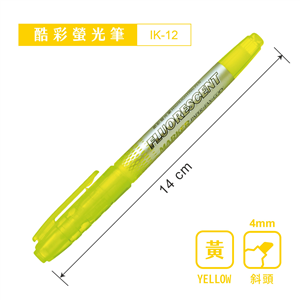章節試閱
◎The Age of Endless Sadness
An Age of Erratic Beliefs
We live in an era of polarized values between democratic ideals and iron-fisted authoritarianism. People increasingly align themselves with political ideologies in conflict with their core beliefs. The pendulum swings left and right, never settling in the center.
An Age of Regional Turmoil
Endless cries from wounded soldiers echo among the heated disputes at economic summits. Battle cries resound, fighting for the impoverished, for power, and for the noble.
An Age of Moral Decay
False information masquerades as truth, failing to conceal the greed inherent in human nature. Greed for gold, for silver, and even more so for wealth itself.
An Age of Growing Wealth Disparity
Human goodness is gone. As the gap between social classes increases, generational rifts and misunderstanding erupt within the home.
An Age of Artificial Intelligence
An AI future is increasingly out of sync with human-centric values and the purported microchip renaissance is not to be trusted. Personal data security is dictated by policy set by industry and the government. Speed, satisfaction, desire. Infinite sadness will become the greatest common factor of humanity.
Wind remains unseen, its silent presence unnoticed in the absence of a storm.
Scenery, overlooked by the mind, is omnipresent.
Viewing the land, a heartwarming story awakens my absentmindedness.
Landscape photography is simple for me because I am immersed in it. With compassion, I appreciate the thoughtfulness that people have devoted to the small, intimate corners of their lives as I move closer to a subject and focus a bit more. In a larger environment, I create a longer distance between myself and single subjects, such as a mountaintop, allowing my heart and eyes to perceive the vastness of the natural world.
I once heard a novelist say, “People feel estranged due to excessive closeness; with distance, because of longing, the heart feels closer.” The active movement of shooting must imitate prose, alternating between near and far, to pull the heart forward.
While most landscape photography depends upon photographers traveling to and seeking out extraordinary scenes, my images are discovered during casual walks.
‘Afterwards’ Artist Statement
My new work, ‘Afterwards’, explores themes of daily life. I have purposefully avoided photographing momentous occasions such as birthdays, graduations, and weddings, to minimize the prominence of any one individual. Ordinary moments blur subtle lines between the image, the audience, and the photographer, rendering them even more indistinct.
Bypassing nostalgic representations of culturally historic
old streets and antiques, my lens rejects what words can
illustrate more precisely.
From a spontaneous perspective, the camera maximizes
information within the frame, translating intricate and rich
detail that mimics how our eyes perceive the real world.
Black/White: The Philosophical Translation of Images
The vivid and richly detailed color images in ‘Afterwards’ signify a longing for an advanced high-tech society in the future. The de-saturated black-and-white images aim to reduce the photorealistic impression of the photographic process. The black-and-white images represent reality but challenge the tonal aesthetic of traditional film-based photography. Overall contrast is softened in the black- and-white images, highlights are intentionally overexposed, focus is softened, and a dizzying sense of motion is created which diminishes a connection with reality.
In ‘Afterwards,’ the recurring profile of a person’s back subtly narrates thedark stories and politically obscured events hidden behind the subjects, through seemingly tranquil images. Scattered throughout the series, small black squares, representing the smallest units in digital technology, illustrate the relentless pressure of artificial intelligence “machines and computer people" and the imminent threats from cybercrime and cyberwarfare. A nightmarish scenario.
Opening ‘Afterwards’
Color and black-and-white images intermingle, where reality and illusion coexist. The color images, symbolizing brightness, positivity, and an ideal state, are not confined to a single hue or subject. They are brimming with rich visual information, full of textural depth, and possess an endless visual rhythm that flows through time. The everyday black-and-white scenes expose the uncontrollable, fleeting changes of reality, revealing the contradictions and regrets of past ideals that no longer exist.
Flipping through ‘Afterwards'
Fingers cut by paper, overwhelmed and saddened by pervasive false information. Misty, tearless eyes fail to remember the sensations evoked by the real world. Amid the black-and-white remnants of the front and back pages, time flows, silence is reversed, panic is diluted, and memories begin to emerge from the depths of the heart.
Closing ‘Afterwards'
Solitary beliefs are constrained by the powerless veins of society.
A weary mind struggles to grasp the impact of artificial intelligence on the future.
Turn away, which direction should I look?
Motionless, unwilling to move, it is the realization of an inability to move.
Turning Away
A woman, dressed in casual shoes and white blouse, leans over the glass counter of a watch shop owner and says, “Boss, this is a 20-year-old wedding anniversary watch. Can you replace the strap with American alligator leather then see if it can run for another 20 years?”
That summer, our family biked along Taiwan's east coast. On a steep slope, my younger son stopped, turned his back to us, and nodded to two nearby Taiwanese water buffalo, saying hello.
After the ritual, Jigong took off his Daoist robe, put on blue and white slippers, and walked into the temple under renovation. With his hands crossed behindhis back, he counted the gods he could see and those he couldn't: Guanyin,Lü Dongbin, Mazu, Jade Emperor, Dongyue Great Emperor, Xuantian Shangdi, Heavenly Mother, Shennong Great Emperor, Baosheng Dadi, Three Mountain Kings, Water Immortal Honoured King, Kaizhang Shengwang, Guangze Zunwang, Linshui Lady, Five Manifestations Great Emperor, Central Altar Marshal, Lords, General of the Masses, Righteous People, City God, God of Wealth, Kitchen God, Wenchang Emperor, and Kui Star...
On the platform heading to the Metropolitan Museum in New York, my wife, draped in a white short coat, leans against a large steel pillar with her arms crossed. The two brothers, avoiding eye contact, pause their conversation. Facing away from the direction of the incoming train, the three of them formed a triangle of familial space, each lost in our own thoughts, quietly awaiting the sound of the approaching train.
◎背影,距離的透視
走在同一條路上,沒有特別注意,大部分的情況看不到他人的背影,應該是其中有社會距離的敏感。
看到他人的背影,可能是對方出發早了,再加上體力好,其他實質的優勢,距離於是越來越遠,背影也越來越小,遲早就消失在眼前。
另一方面,如果前人累了,距離縮短,背影便逐漸的放大。
他人的背影大大小小,可以控制,也無法控制。
看著背影,
低頭 學著觀察當下,
抬頭 承認現實和個別意志的差異,
接受現況和理想的距離,
體悟如何和不同信念的共存。
勵志達人說 :
走在前端的對象,是潛意識的燈塔,是認知上的目標。
有他,有它,生活相對輕鬆 ;
只因為,看著前人的背影──無旁鶩,安心,追隨即可。
前人的腳步放慢了,身體逐漸趕上了,並肩齊步了,眼前的目標消失了。
背影不再,開創向前的目標──迷惘、寂寞、焦慮、害怕。
轉身,眼不見為淨?
只是仍然看不到自己的背影。
◎轉身前
信念動盪的時代,
民主信念拼鬥極權的掌控,
不同族群,向外政治選邊站,向內糾結生活的價值觀。
盪、盪,盪!偏左,靠右,就是不居中。
區域性動亂的時代,
傷兵哀嚎,經濟圓桌的叫囂,聲聲不絕。
戰、戰,戰!為貧,為權,也為貴。
道德不倫的時代,
假資訊真詐騙,掩蓋不住人性的貪婪,
貪、貪,貪!為名,為利,更為慾。
貧富加劇的時代,
人性本善被吞噬;戶外的社會階級,內縮為在家世代認知的斷層。
人工智慧的時代,
科技的本質尚未是人本,晶片的文藝復興不值得信賴,
個資安全,政府說的算。
速、滿、欲,無限的憂鬱,
人的最大公約數。
◎轉
風,如果不是狂風暴雨,看不見它不動聲色的存在
景,心智上經常視而不見,卻無所不在
看風景,你感性的軟風故事,喚醒了我的不經心
攝影家照風景不求人,放眼皆是。
從「同理心」出發,靠近一點,專心一點,再用力一點點,
便可以看到、看懂,他人在小地方對生命的用心。
在大自然裡,他卻遠離那些小小、單一的對象,讓心和眼看到廣大真實的世界。
曾經聽小說家說:
人因為過度的靠近而感到疏遠;
有了距離之後,因為想念,心裡反而覺得更為靠近些。
照像,也得學著像小說般:讓忽近忽遠的身體,把心給拉向前?
想說的是:
如果別人的風光是腳走出來的,我的風景是散步看到的。
◎轉身《之後》
穿著輕便布鞋,白色上衣的女人,全身壓在鐘錶店老闆的玻璃櫃檯上, 說:
「老闆,這隻 20 年前的結婚紀念錶,幫我換一條美國鱷魚皮的錶帶,上上油,看看能
不能再走個 20 年?」
......
那年夏天,全家台灣東海岸鐵馬行。
在一個陡峭的斜坡上,
老二停下來,背對我們,向一旁的兩頭台灣水牛點頭說:哈囉!
......
結束了法事,
濟公脫下道袍,穿著藍白拖,走進整修中的寺廟,兩手交叉在背後,微微的彎著身體,細數眼前看到和看不到的的眾神:觀世音,呂洞賓,媽祖、玉皇上帝、東嶽大帝、玄天上帝、天上聖母、神農 大帝、保生大帝、三山國王、水仙尊王、開漳聖王、廣澤尊王、臨水夫人、五顯大帝、中壇元帥、王爺、大眾爺、義民、城隍爺、福德正神、灶君、文 昌帝君、魁星 ......
......
前往紐約市中心大都會博物館的月台上,
太太肩上披著白色短外套,雙手交叉靠著大鋼柱。
眼神沒有交接的兩兄弟,暫停了話家常。
背向地鐵進站方向的三個身體,圍著等邊三角形的家庭空間,
母子各有所思,靜靜的等待列車進站的聲音。
◎生活色彩學
影響顏色的三個要素:光線、對象、觀看者本身。
專業人士斤斤計較:有色光的「色溫」如何影響顏色的精準;
一般人卻只在意:
晚上停電,沒有光線跟盲人一樣,
無法用視覺來判斷顏色。
顏色是眼睛、大腦和生活經驗的總和。
媽媽說:筆記本上必須標示紅、橙、黃、綠、藍、靛、紫。
(「色相」是老媽社交圈的代表 )
爸爸說:這件水藍色的外套看起來比較亮。
( 老爸不一定知道「明度」是什麼?)
阿公說:色彩不飽和是偷工減料耐不住太陽照射的褪色現象。
(「彩度」是阿公的經濟學用詞 )
老師說:顏色的相貌──色相;
顏色的反射情況──明度;
顏色的成分比例──彩度。
選舉期間,
巷子口的里長把構成色彩三個元素講得更簡單:
民眾對某一個政黨代表色的認知:色相
選民表現在他人面前的政治取向:明度
身體力行、支持政黨的忠誠度:彩度
傳統市場,
綠黑制服小妹妹:帥哥,你喜歡我染的這個紫菜色的頭髮嗎?
卡其長褲水果桑:太太,今天的香蕉比較黃,便宜賣妳。
水藍圍裙雞蛋姨:今天我有紅色的蛋黃,比較營養喔!
舊舊、豬肝紅襯衫的男人:我們家的黃臉婆,居然不給我買那本 Yellow novel ......
推著菜籃車的太太回頭:開口閉口黃臉婆,有膽,回家再說說看!
水果哥切開手上綠皮的西瓜說:豔麗的紅肉包甜!
(這是視覺繼續比對的妙招)
證婚人:這新人郎才女貌,綠葉紅花,絕配!
(這叫同時比對的效應)
匍匐前進的阿兵哥,站起來看不清楚綠制服的班長在哪?
(典型的顏色適應現象)
普魯士藍,檸檬黃,「日本色研配色體系」......
色彩名 ?
專家高傲的用詞,
似懂非懂,馬馬虎虎,不傷和氣。
◎心靈配色
捷運車廂裡,對面的胖女人對一旁的年輕媽媽說:
妳小女兒這件粉紅上衣真是漂亮!
側過頭看著窗外,心想,
藍天如果不靠臨近的雲、山、海、樹來做適宜的襯托,
應該不容易被感知它「單色」的存在吧?
更何況,
大概只有站在大沙漠裡,或者是面對著汪洋大海,無明顯邊界的景致時,
眼睛才有機會見識到「單純的顏色」。
想不懂,胖女人有什麼特殊能力可以只看到單一的顏色?
好想站起來,走過去跟她說:
顏色,抽象的感覺常勝於顯見的外貌:
顏色,比對的情境下可以增加個別的可視度;
(應該建議媽媽穿一件跟女兒互補色的衣服)
顏色要好看,主要對象和附近他者面積大小的比對關係是關鍵。
(這太複雜了,她不會懂的)
下車,
走出捷運站,
通過紅、白對比的警告標誌,
周遭等紅綠燈的行人,沒有一個穿同樣顏色的衣服;
餘光,
商家櫥窗內的產品五顏六色。
一陣涼風迎面而來。
噢!
原來生活中的顏色,就是眾色類比混雜的共存。
邊走邊想,
大自然中任何單純顏色的印象,
即使偶爾出現在極地的生態環境,或人工刻意栽植的「彩色公園」裡,
但,往往再走幾步路,
非單一、多元共存的「顏色社會」馬上就出現在轉角處了。
喝一口手上的星巴克,
自言自語:對的時間,好的空間,品嘗了
大自然秩序化不規則的大器,眾色和平共處的「社會貌」,
不免讓人感傷;眾人群聚的地球,卻是
惡霸獨佔、優劣爭端不斷的社會。
◎黑白攝影的心智灰階
相信很多人身處時空錯位的情境,
容易產生心智混沌和生理暈眩的生活經驗。
如果把上述現象對應到現實中,
同時看到兩個極端差異的對象,而心智上一時沒有辦法做出斷然的決定時,
往往自動進入「灰色」的反應,靜待下一步更明確足以移動的方向。
這種生活中的「灰色」蟄伏是安全、平靜的,
似乎也可以用來解釋,
為什麼那些少掉絢麗的色彩,降低對象浮面的華麗,
無色、多層次、長階調的灰階影像,
總是比較容易帶給人祥和的心靈感受;
而極度反差的黑與白並置影象,
雖然容易產生明顯的圖案,並造成視覺注目的張力,
但,畢竟和肉眼所見豐富階調的經驗大不相同,
反而容易因為視覺的錯亂,造成心緒的波動。
這或許也是美國攝影家安瑟亞當斯的黑白風景照
可以被大眾普遍接受的原因之一。
◎試說黑白照像的「殘像補色」藝術
色彩學經常提到,
眼睛凝視一個顏色相當一段時間之後,會因短暫的視覺疲乏而引發生理調節,
如果將視線轉移到其他處(尤其是白色的對象),
便順著殘像浮現出截然不同的互補色。
「殘像/補色」的生理特質,引發了無色彩照像的藝術想像;
也就是,
黑白照像保持和現實世界逼真外貌的同時,
色彩缺席的曖昧現象,省略了對象(樹木、磚塊......)基本的辨識,
精神上反而力邀觀眾參與心理或藝術的「顏色填補」。
更具體的說,
眼睛面對黑白影像的當下,
心智上應該是(逐漸)浮現個人記憶中的顏色,
例如:絕大部分的樹葉都是綠色的,
有白雲的天空都是藍色的……
細想,
黑白的影像如果可以不時的力邀觀眾,
為眼前的對象主動進行「色彩的填補」,
本質上不就是一種「藝術加法」的介入?
如此的哲思,
大不同於黑白照片之美,是來自於作者「減除」了現實中色彩的論述。
◎The Age of Endless Sadness
An Age of Erratic Beliefs
We live in an era of polarized values between democratic ideals and iron-fisted authoritarianism. People increasingly align themselves with political ideologies in conflict with their core beliefs. The pendulum swings left and right, never settling in the center.
An Age of Regional Turmoil
Endless cries from wounded soldiers echo among the heated disputes at economic summits. Battle cries resound, fighting for the impoverished, for p...
作者序
◎
手持數位相機
體悟,透視壓縮空間的現實,快門截斷持續性的時間,鏡像平面化對象的本質。
接受,親臨現場照像,不再是數位鏡像的必要條件。
順應,簡易成像、大量複製、快速傳播的現實環境,小心翼翼的改變和觀眾互動的距
離。
正視,任何影像構成的元素:色彩、反差、細緻度 ......只是充分、非必要條件的科技
事實。
牢記,即使承續類比攝影美學加入動人的故事,仍難有紀錄真實的說服感。
放下數位相機
省思,觀眾即使不知道拍攝者是誰?仍保有拍照「來自於人」的活動本質。
把握,成像和現實對象之間擬真的圖象特質,
從時間的哲學出發,誘發觀者共有的情感經驗。
2000 年《不經意的記憶》
讓家人日常中不自覺的肢體語言,真情「自動化」成像在環境中。
2024 年新作《之後》
生活照像,迴避循環儀式的留影,不複誦紀念性的綵排, 淡化故事中的成員在事件核心的紀念狀態。
《之後》無意識於編碼的影像:
躲閃,具有過去式印象的社會符號(老街、古董,緬懷的視覺語言)。
鏡頭,回絕了文字可以精準表述的社會符號(蛋糕、蠟燭、獎杯......);
視角,即興的框取了鏡頭前最大量的訊息,轉譯細碎、繁複的影像細節,
仿現雙眼對現實世界的感知印象。
快門,不刻意表述顯見的生活感動,小心翼翼翻開「家的背影」一頁頁的劇場筆記;
凸顯,當下剛剛發生,零散、不經意的移動和轉動情境。
底片,隨性散記了周遭陌生人,在現實中呼吸的斷面。
《之後》稀鬆平常的片刻,
讓鏡像、觀眾、攝影者原本隱微的界線, 更模糊了。
◎
手持數位相機
體悟,透視壓縮空間的現實,快門截斷持續性的時間,鏡像平面化對象的本質。
接受,親臨現場照像,不再是數位鏡像的必要條件。
順應,簡易成像、大量複製、快速傳播的現實環境,小心翼翼的改變和觀眾互動的距
離。
正視,任何影像構成的元素:色彩、反差、細緻度 ......只是充分、非必要條件的科技
事實。
牢記,即使承續類比攝影美學加入動人的故事,仍難有紀錄真實的說服感。
放下數位相機
省思,觀眾即使不知道拍攝者是誰?仍保有拍照「來自於人」的活動本質。
把握,成像...
目錄
The Age of Endless Sadness
背影,距離的透視
轉身前
轉
轉身《之後》
黑道 / 白說:時空的折痕
好看的數位圖象
影像視覺張力之謎
照像,遠離「生活格式塔」
生活色彩學
看見「心裡不存在」的顏色
記住顏色有多難?
心靈配色
「色彩」在數位影像中的充分條件
色彩對「影像真實」干擾的省思
黑白攝影的心智灰階
試說黑白照像的「殘像補色」藝術
無色彩影像的形式消減
鏡頭,一知半解的明度
拍照,有「像」不見「圖」?
感性照像?
猜,影像的「精彩」從動人的故事開始
「照像.非紀錄」自然、輕鬆.有真實
細碎資料的真實感
攝影家「官能質感」的筆觸
影像筆觸
看出細節,拍得主題
個人簡介
作品目錄 〈白黑之間〉black or white (p. 4-7)
〈應該選甚麼魚〉which fish do I want? (p. 8)
〈一定要扣緊〉keep it tight (p. 9)
〈看啥〉what’s wrong? (p. 10-13)
〈急凍不成〉not frozen (p. 18)
〈緊盯著〉watching (p. 19)
〈接下來〉then? (p. 20-21)
〈謝謝關心〉staying close (p. 22-25)
〈向左〉to the left (p. 28)
〈向右〉to the right (p. 29)
〈暫停一下〉timeout (p. 32-35)
〈邊看邊想〉seeing and thinking (p. 36-37)
〈不合了〉ill-fitting (p. 38)
〈觀望〉let’s see (p. 39-46)
〈想要一個家〉home sweet home (p. 47)
〈並肩齊步〉side by side (p. 48)
〈紅訊飛揚〉red everywhere (p. 52/54)
〈不過度期望〉no expectation, no harm (p. 55-58)
〈不用等我〉without me (p. 58-61)
〈尋尋覓覓〉searching for nothing (p. 62-63)
〈低頭〉head down (p. 68-71)
〈下課了〉class dismissed (p. 72)
〈下一個目標〉aiming for the next (p. 73)
〈看我的面子〉for my sake (p. 74)
〈撿起來〉pick up (p. 75)
〈眾說紛紜〉they say (p. 76-81)
〈不能走〉can’t leave (p. 81-84)
〈就是找不到〉nowhere to be found (p. 85)
〈各有所好〉to each their own (p. 86-87)
〈定位中〉positioning (p. 88)
〈從長計議〉future planning (p. 89-92)
〈現在還可以〉for now (p. 92-95)
〈各自討論〉separate discussions (p. 95-98)
〈向前看〉looking forward (p. 99-100)
〈福多多〉lucky (p. 101)
The Age of Endless Sadness
背影,距離的透視
轉身前
轉
轉身《之後》
黑道 / 白說:時空的折痕
好看的數位圖象
影像視覺張力之謎
照像,遠離「生活格式塔」
生活色彩學
看見「心裡不存在」的顏色
記住顏色有多難?
心靈配色
「色彩」在數位影像中的充分條件
色彩對「影像真實」干擾的省思
黑白攝影的心智灰階
試說黑白照像的「殘像補色」藝術
無色彩影像的形式消減
鏡頭,一知半解的明度
拍照,有「像」不見「圖」?
感性照像?
猜,影像的「精彩」從動人的故事開始
「照像.非紀錄」自然、輕鬆.有真實
細碎...




 收藏
收藏

 1二手徵求有驚喜
1二手徵求有驚喜














